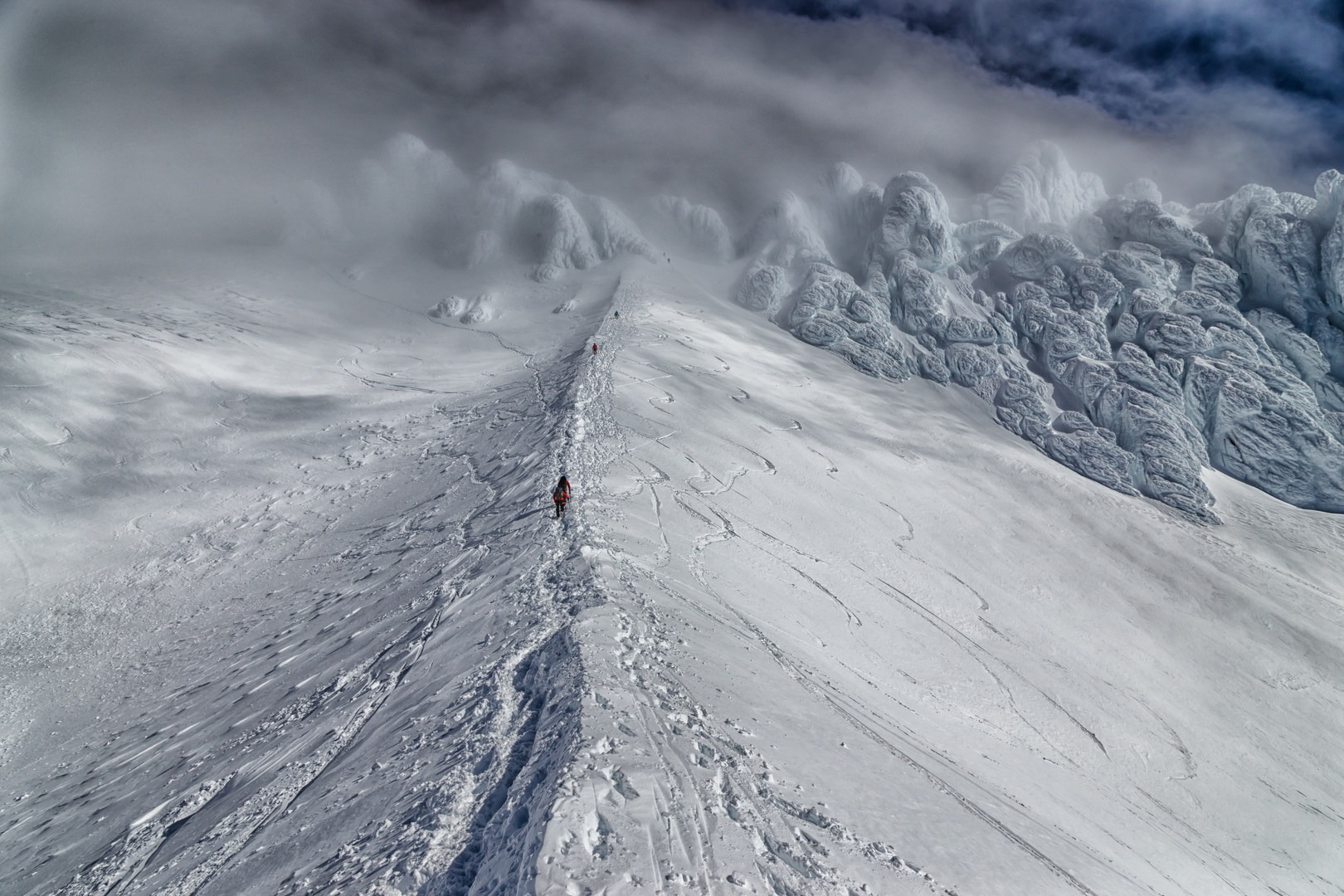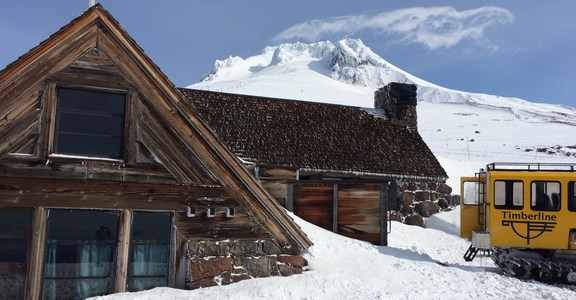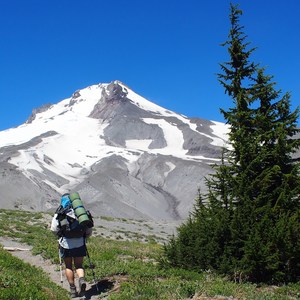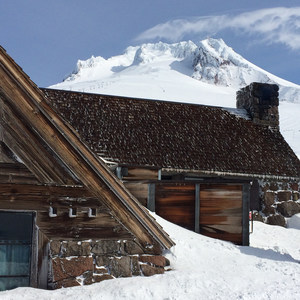You are here
Mount Hood attracts 10,000 climbers each year, and for good reason. A summit of this 11,250-foot volcano includes panoramic views beyond the Mount Hood Wilderness all the way to the Mount Jefferson and the Three Sisters to the south; a unique view of the mountain’s morning shadow stretching out over Portland; and summit views to the north of Mount Rainier, Mount St. Helens and Mount Adams.
This mountain also attracts a large number of climbers because, under good conditions, it makes for not-so-technical mountaineering. With the weather and snow and ice conditions cooperating, most climbers should be comfortable summiting without technical gear beyond ice axes and crampons. That said, always be sure to have the right amount of protection necessary for your skill level and the current conditions! The greatest distance of the climb is a straightforward hike to the Hogsback, the edge of the crater.
Above the Hogsback is where a climber can make the decision on the best route to the summit. Where the ascent meets the bergschrund (horizontal crevasse), you can take the left fork for the Old Chute or turn right for the Pearly Gates. The Pearly Gates are more often icy. Also, since the passage through the Pearly Gates is narrower than that of the Old Chute, there is a greater chance for congestion as well as ice fall. Aside from these challenges, the Pearly Gates route offers close-up views of stunning ice formations and continuous views to Mount Jefferson on the horizon. Also, because of its more direct/vertical route to the summit from the bergschrund, the Pearly Gates route requires less down climbing than the Old Chute.
Before attempting a Mount Hood summit, always check the weather reports and avalanche and ice conditions. Also, be sure to sign the climbers register at the climbing center before your climb begins and to sign out on your way off of the mountain. For this route, any time of the year, all climbers should have at least a headlamp, helmet, ice axe and crampons. The headlamp is necessary to start your ascent early in the morning, closer to midnight than sunrise, in order to reach the summit and begin descending before conditions become more hazardous after approximately 10 a.m. All climbers should also be comfortable with an ice axe self-arrest prior to taking on Mount Hood, as there are numerous injuries each year due to falling and sliding climbers.









Comments
Sign In and share them.